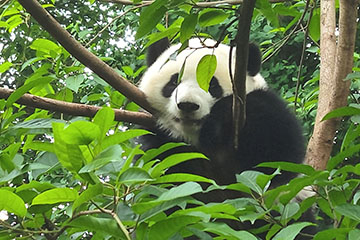Name in Chinese: 乐山 Lè Shān [le sæ]
Location: Sichuan Province, Southwest Part of China, GMT+8
Population: Three and a half million
Telephone Code: +86833
Reputations: A National Historical and Cultural City, One of China’s Best Tourist Cities
Keywords: Leshan Giant Buddha, Emei Mountain, Sweet Marinated Duck, Tofu Soup
Known as “the Land of Fragrant Crab-apple Flowers”, Leshan lies in the southwest of Sichuan Basin. It is famous in the world for Leshan Giant Buddha and Mount Emei. Both were added to the list of world natural and cultural heritage sites by UNESCO in 1996. The city is located at the confluence of three rivers, namely Minjiang River, Dadu River and Qingyi River. In the year of 309 B.C., Leshan was taken over by the Qin’s army. The governor named it as Nan’an County. It was called Jiazhou Prefecture in the Tang Dynasty(618-906), and was renamed as Leshan during the reign of Emperor Yongzheng(1722-1735), the Qing Dynasty(1644-1911).
Attractions
Leshan Giant Buddha
Leshan Giant Buddha is the largest stone-carving art treasure in the world. It is honored as the classic-work of religion, hydraulic and carving art. The huge and majestic statue was created by the ancient craftsmen and artists with simple tools over one thousand years ago. It indicates that their talent was extremely great. There the Giant Buddha has stood for 1,300 years, and still survives in good shape. It is due to its scientific drainage system. The statue is 71 meters(233 feet) in height. In 1996, Mr. Sancerre, an expert from UNESCO came to Leshan. He claimed that the statue of Leshan Giant Buddha could rival any sculptures in the world, including Sphinx in Egypt. Read more about Leshan Giant Buddha......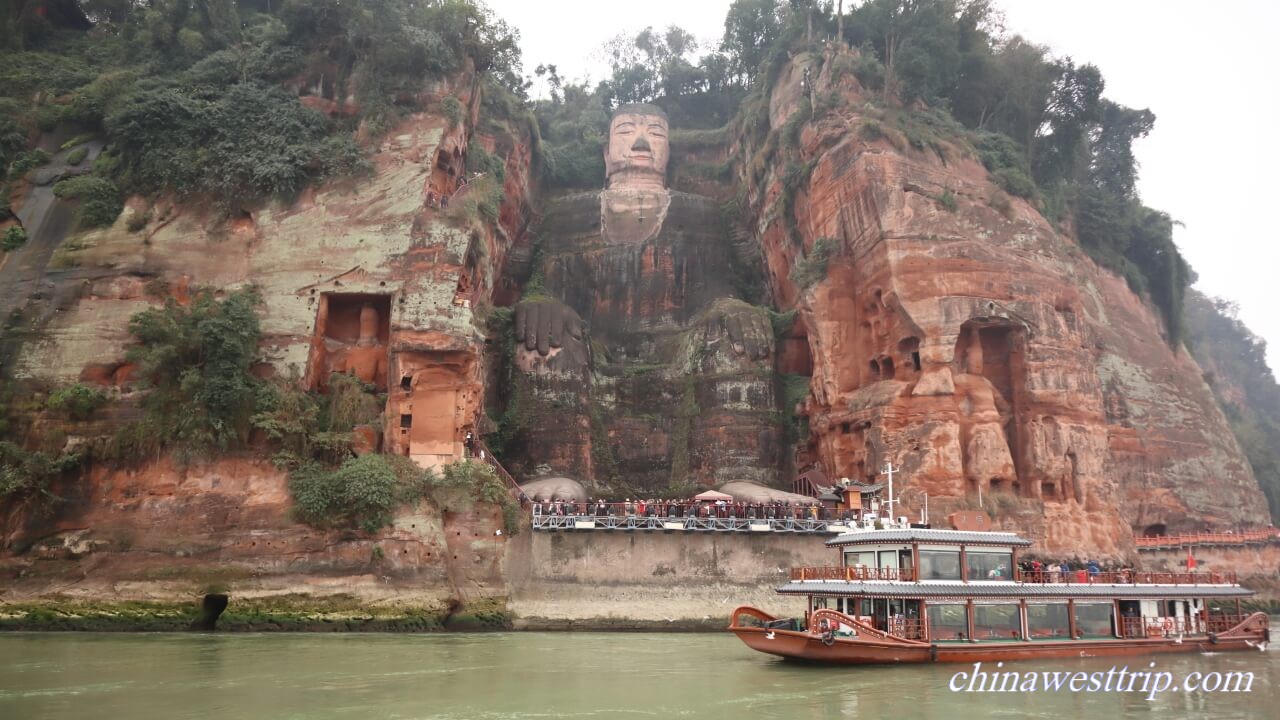
Emei Mountain
Emei Mountain is situated in the southwest of Sichuan Basin, about 150km(93 miles) away from downtown Chengdu. It was listed together with Leshan Giant Buddha as a world natural and cultural heritage site by UNESCO in 1996. The mountain is famous for its natural beauty and Buddhist culture. There is a popular saying about its beauty in China. It goes that no mountain under the heaven can rival Mount Emei in its elegance and beauty. As the holy land of Samantabhadra Bodhisattva, Mount Emei is rich in Buddhist culture. It is one of the Top 4 Buddhist mountains in China. Read more about Emei Mountain......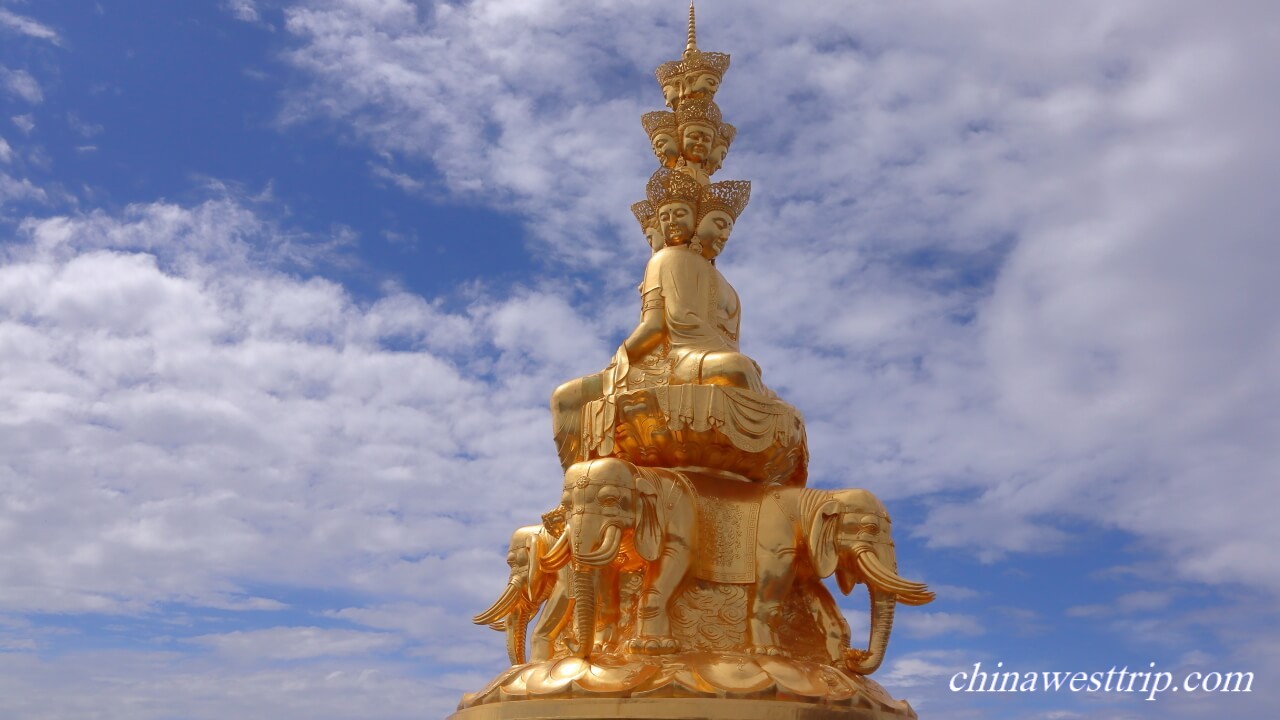
Jiajiang Thousand-Buddha Cliff Grottoes
Jiajiang Thousand-Buddha Cliff Scenic Area is located in the northwest of Leshan Prefecture. It was added to the list of national historical and cultural relic sites under protection in 2006. The distance between the scenic area and downtown Leshan is about 40 km(25 miles). There are 162 grottoes and over 2,400 stone sculptures in the scenic area. The grottoes and the sculptures are chiseled on the cliff. People started to chisel the grottoes in the Kaiyuan Period(713-741), when the Tang Dynasty(618-907} was flourishing.
Jiayang Steam Train
James Watt invented the steam engine in 1768. The first steam train started to run on July 25th, 1814. It was designed by George Stephenson. The steam train has been withdrawn from the historical stage. However, the one at Jiayang Coal Mine is still in operation. The railway was built in 1958 with a total length of 19.8 km(12.3 miles). It is a narrow gauge railway. The distance between the rails is only 76.2 cm(30 inches). The standard gauge is 143.5 cm(56.5 inches). Jiayang Steam Train is quite small. The pit has been shut down and changed into a museum which shows the history of industrial revolution. It is a trip to ride the train back to the 18th century. The best time to visit Jiayang Scenic Area is in the spring, when the rape is in full bloom. Jiayang is a national 4-star scenic area. It is located in Qianwei County, around 70 km(43 miles) to the south of downtown Leshan.
Food
Leshan people are faddy eaters. They love Sichuan food. Among those dishes, the following are specialties in Leshan.
The Sweet Marinated Duck
Name in Chinese: 甜皮鸭 Tián Pí Yā [tiæ pi: ja:]
The Sweet Marinated Duck is the epitome of Leshan specialties. It tastes delicious, not too salty and sweet. The skin is quite crispy and the meat is soft. Many foreigners told us that the Sweet Marinated Duck was more tasty than Beijing Roasted Duck.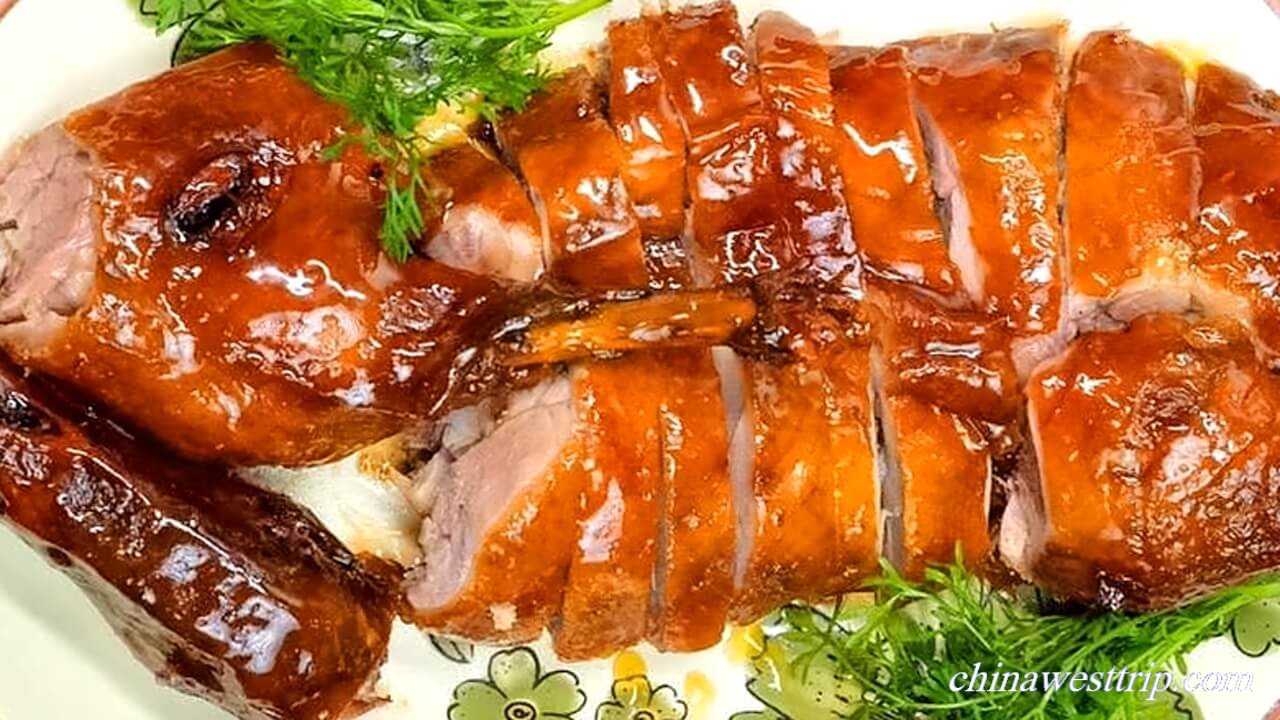
Leshan Tofu Soup
Name in Chinese: 豆腐脑 Dòu Fǔ Nǎo [dəu fu: nau]
Leshan Tofu Soup is also known as the Jellied Bean Curd. A cook ladles the soft bean curd into a bowl, stirs it with some other ingredients, such as steamed beef, pickled vegetables, peanuts, cilantro and chopped shallots. Customers can add vinegar, soy sauce, and chili sauce into the soup by themselves.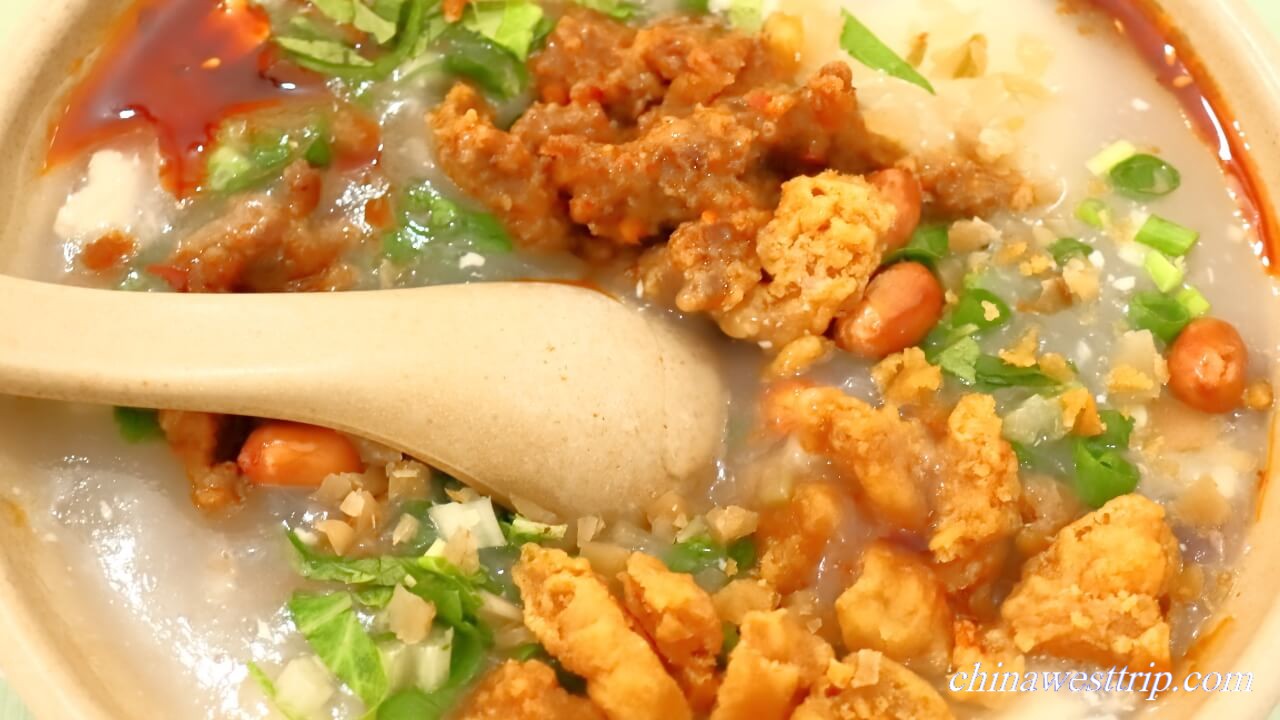
The Steamed Beef
Name in Chinese: 蒸牛肉 Zhēng Niú Ròu [dzen njəu rəu]
Cooks mix sliced beef with rice flour and seasonings, and fill steamers with the mixture. The steamers are made of bamboo stems, and look smaller than the ones used in western countries. The steamed beef is appetizing and tender.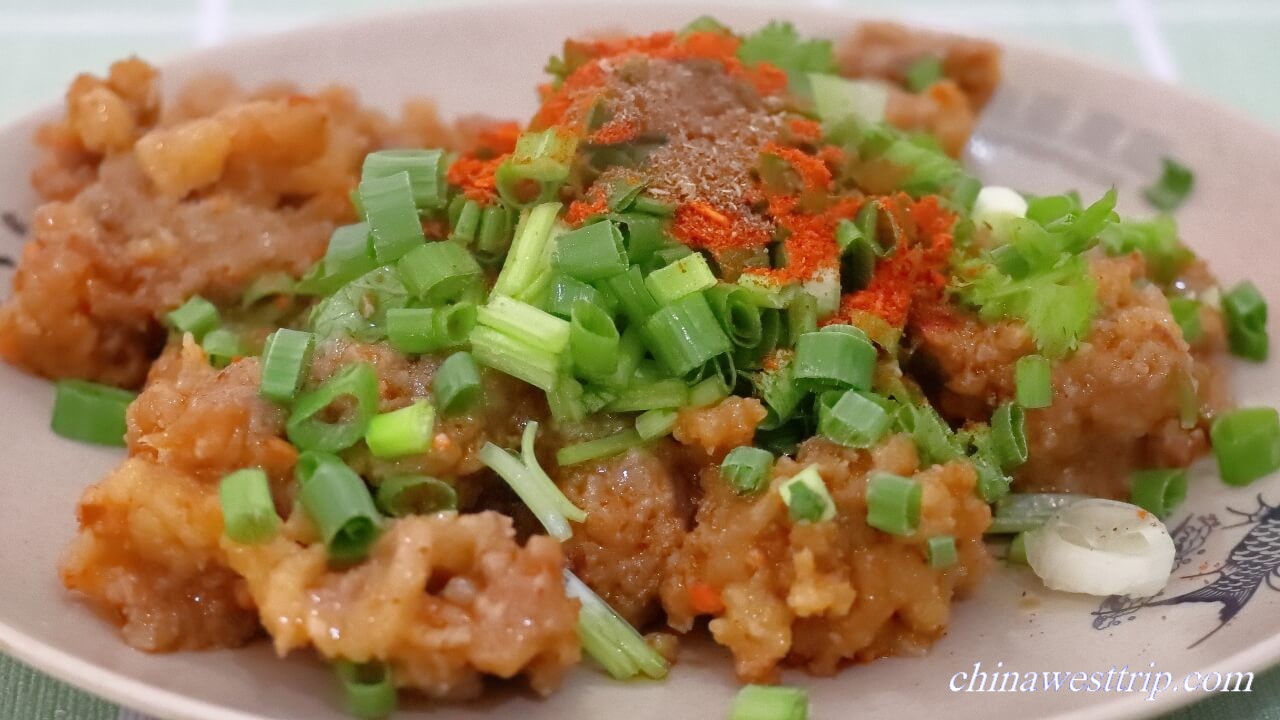
Qiaojiao Beef
Name in Chinese: 翘脚牛肉 Qiào Jiǎo Niú Ròu [tʃau dʒau njəu rəu]
Qiaojiao Beef is also called Niuza-Tangguo in Chinese, which means cattle-offal soup. It is one of the locals’ favourite dishes. Qiaojiao means cross-legged. A long time ago, laborers trudged along the rivers, dragging barges with ropes. They worked hard, but were paid poorly. There was a slaughterhouse near the wharf. The cattle offal could not be sold out. A butcher collected, washed and sliced the cattle offal. The butcher’s name was Zhou Tianshun. He placed a big wok, tables and benches at the wharf. The offal slices were boiled in the soup, ladled into bowls and offered to the laborers. Zhou Tianshun sold his dishes at a low price so that the laborers could afford it. When the laborers had the soup, they often sat on the benches with their legs crossed. The soup is quite nutritious and tasty. It is seasoned with ginger, black pepper, shallot, cilantro, salt and others. Nowadays, the Niuza-Tangguo restaurants do not only provide customers the cattle offal, but also the beef. It tastes quite tender and palatable.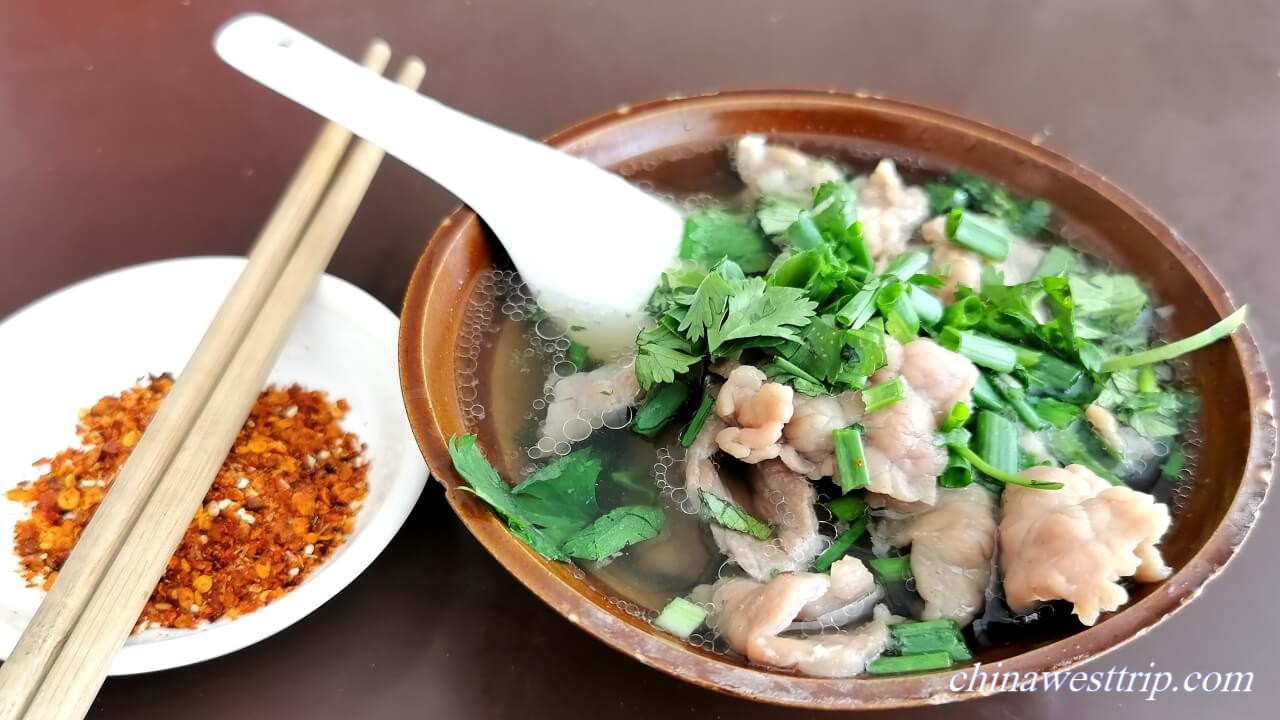
Malatang Hot Pot
Name in Chinese: 麻辣烫 Má Là Tàng [ma: la: tæŋ]
Malatang is known as Chuanchuan or Bamboo-stick Hot Pot. Unlike the common hot pot, the sliced meat and vegetables are skewered on bamboo sticks and boiled in the soup. Malatang refers to the heat of soup and the major seasonings, namely chili and Sichuan numbing pepper corn. Most of the locals love spicy food. However, the hot pot restaurants also offer customers non-spicy soup.
Leshan Kebab
Name in Chinese: 乐山烧烤 Lè Shān Shāo Kǎo [le sæ sau kau]
Leshan Kebab is quite famous in China. Kebab shops in Leshan usually open from the evening to the midnight. It is a part of Leshan’s night life. The locals often have dinner with their friends or family members at 6:00 P.M.. Then, they spend two or three hours in a karaoke bar. Before going home, they move together to a kebab shop.
Bobo Chicken
Name in Chinese: 钵钵鸡 Bō Bō Jī [bɔ: bɔ: dʒi:]
Bobo Chicken should be translated into English as cold pot. Here is a recipe for Bobo Chicken. The chicken needs to be boiled, sliced and skewered on bamboo sticks. After the chicken soup cools, put some seasonings into the soup, like chili sauce, soy sauce, salt, chopped shallot and others. Then, place the chicken in a small pot, and ladle the soup to soak and marinate the chicken.
Shaomai Dumpling
Name in Chinese: 烧麦 Shāo Mài [sau mai]
Shaomai is known as steamed pork dumpling by foreigners. It is a traditional Chinese mid-morning snack that the minced pork is wrapped in dough. Shaomai looks like a pomegranate. It is different from the stuffed bun, wonton and Jiaozi dumpling. The locals usually eat Shaomai with chicken soup.
How to Get to Leshan
The city of Leshan is 135 km(84 miles) to the south of Chengdu. It takes about two hours to get to downtown Leshan from Chengdu by a car. Some people also ride a bullet train to Leshan and Emei from either the South Chengdu Railway Station or the East Chengdu Railway Station.
Weather
The temperature in Leshan ranges from 8℃(46.4°F) to 15℃(59°F) in spring, 19℃(66.2°F) to 28℃(82.4°F) in summer, 23℃(73.4°F) to 30℃(86°F) in autumn and minus 12℃(53.6°F) to 17℃(62.6°F). Leshan and Chengdu are similar in both the altitude and climate features. The rainy season lasts from July to August. The average altitude of Leshan is about 500 meters(1,640 feet) above sea level. The Golden Summit of Emei Mountain is 3,077 meters(10,095 feet) above sea level. It is quite cool at the summit. Visitors need to bring a jacket in summer, and wear a winter coat in both the spring and the autumn.
Recommended Tour
Two-day World Natural and Cultural Dual Heritage Tour
Related Articles:
Leshan Giant Buddha
Emei Mountain
Author: Tina Luo
Update:
